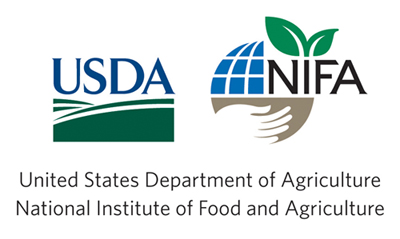
Researchers work to make crop pollination sustainable in the Northeast

Editor:Philip Moore, The University of Tennessee
Last Edited: January 15, 2015
The pollinator security project was initiated in 2011 to address a gap in knowledge with respect to pollinator communities in northeastern cropland.
Reports of declining native pollinators, decreased availability of honey bee rental colonies, and general public misunderstanding led to the creation of this working group to produce a sustainable pollination strategy for stakeholders.
The goal is to contribute to long-term profitability of fruit and vegetable production and the outcome is this webpage along with other farm training and publications to increase knowledge and adoption of practices that protect pollinator communities.
Upcoming Event: UMass Extension Symposium: Pollinator Health for Agriculture and Landscapes March 26, 2015
One component of this project is video segments which highlight aspects of fruit or vegetable production in the Northeast.
Part One: Commercial Blueberry Pollination in Maine’s Blueberry Barrens
Video Segments:
Part 1: Commercial Blueberry Pollination in Maine’s Blueberry Barrens
Part 2: Lowbush Blueberry in Maine, Native Plants and Native Bees in a Modern System
Part 3: Pollinator Plantings (The Bee Module) for Maine Lowbush Blueberry
Part 4: Landscape Ecology in Maine’s Blueberry Growing Region
Part 5: How to Estimate Native Bee Abundance in the Field
Part 6: Economics of Lowbush Blueberry in Maine
Part 8: Research Topics in Lowbush Blueberry Pollination
Part 9: Pollinator Habitat Enhancement in Cranberries
Part 10: UMass Cranberry Station, Reducing Pesticides, Helping Bees
Part 11: Pollination Requirements of Heritage and Hybrid Cranberries
Specific objectives of this project are to :
1. Determine the contributions of pollinator communities and identify which site characteristics have the greatest influence on pollinator effectiveness in apple, lowbush blueberry, cranberry, and cucurbit.
2. Develop hypotheis-driven model based on factors shown to affect pollination deficits.
3. Quantify pesticide residues in pollen and relate to crop and management strategies, and estimated risk to the bee community.
4. Assess shared parasite load between introduced and native pollinator communities.
5. Analyze the economics of pollination services and determine the value of pollination service.
6. Heighten our understanding of the grower community to understand why farmers accept innovation and to increase adoption of pollinator conservation measures.
7. Facilitate knowledge transfer allowing growers to both assess and improve pollination security.
This content is produced by a group of researchers from across the northeast:
Anne Averil, The University of Massachusetts
Frank Drummond, The University of Maine
Kimberly Stoner, The Connecticut Agricultural Experiment Station
Bryan Danforth, Cornell University
John Burand, The University of Massachusetts
Brian Eitzer, The Connecticut Agricultural Experiment Station
Aaron Hoshide, The University of Maine
Cyndy Loftin, The University of Maine
Tom Stevens, The University of Massachusetts
John Skinner, The University of Tennessee
Dave Yarborough, The University of Maine
Tracy Zarrillo, The Connecticut Agricultural Experiment Station
Kalyn Bickerman, The University of Maine
Eric Asare, The University of Maine
Shannon Chapin, The University of Maine
Eric Venturini, The University of Maine
Sam Hanes, The University of Maine
Kourtney Collum, The University of Maine
Michael Wilson, The University of Tennessee
Philip Moore, The University of Tennessee
Funded by the USDA-NIFA Specialty Crops Research Initiative (SCRI)

